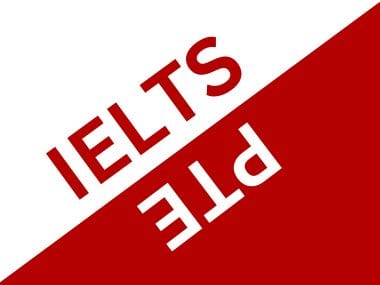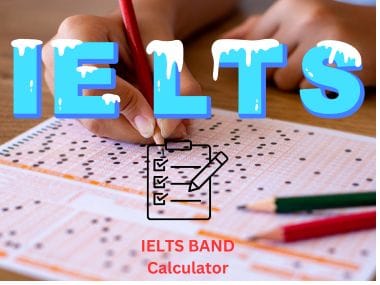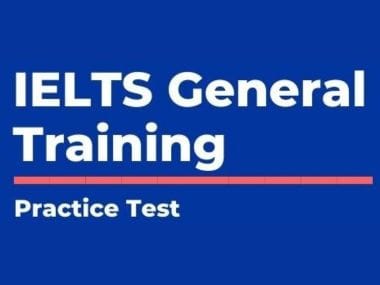IELTS vs. PTE: A Comprehensive Comparison for Test Takers in Pakistan
IELTS vs PTE, Deciding between IELTS and PTE tests can be a game-changer for test-takers in Pakistan, determining their study abroad or immigration prospects. Navigating through the differences can be overwhelming, from exam formats to scoring criteria. In this comprehensive comparison, we delve into the nuances of IELTS and PTE. Whether you are aiming for academic excellence or professional growth overseas, understanding the specifics of each test is vital. IELTS vs PTE, which is better?
Choosing the right test aligns with your proficiency and preference, enabling you to showcase your language abilities effectively. As aspiring test-takers seek clarity in their decision-making process, this article serves as a guiding beacon, shedding light on the key disparities between IELTS and PTE. Let’s embark on this enlightening journey, empowering you to make a confident decision that propels you towards your aspirations.
IELTS vs. PTE: A Comprehensive Comparison for Test Takers in Pakistan
Format and Structure of the IELTS Exam
The IELTS exam, or International English Language Testing System, is designed to assess the language proficiency of non-native English speakers. It consists of four sections: Listening, Reading, Writing, and Speaking. Each section is crafted to evaluate specific skills, ensuring a well-rounded assessment of a test taker’s English capabilities. The Listening section lasts for about 30 minutes and involves four recorded texts, with questions that test comprehension and understanding.
The Reading component varies depending on whether the test is Academic or General Training. The Academic Reading consists of three long texts, while the General Training Reading includes extracts from books, newspapers, and magazines. Both formats require candidates to answer a series of questions that gauge their ability to extract information and understand context. The Writing section, lasting 60 minutes, has two tasks: Task 1 requires candidates to describe visual information, while Task 2 involves writing an essay in response to a point of view or argument.
The Speaking section is a face-to-face interview with an examiner, lasting between 11 to 14 minutes. It is divided into three parts: an introduction and interview, a long turn where the candidate speaks on a given topic, and a two-way discussion with the examiner. This format allows for a dynamic assessment of spoken English, focusing on fluency, coherence, lexical resource, grammatical range, and pronunciation. Overall, the structured approach of the IELTS exam is designed to provide a comprehensive evaluation of a candidate’s English language proficiency.
Format and Structure of the PTE Exam
The PTE, or Pearson Test of English, is another popular language assessment tool, primarily recognized for its computer-based format. Unlike the IELTS, which has a face-to-face speaking component, the PTE integrates all sections into a single test session that takes approximately three hours. The exam consists of three main parts: Speaking and Writing, Reading, and Listening, all of which are administered on a computer, allowing for a seamless testing experience.
The Speaking and Writing section is combined and includes tasks such as reading aloud, repeating sentences, and summarizing written text. This section not only assesses spoken proficiency but also evaluates writing skills through various tasks that require candidates to express their thoughts clearly and coherently. The Reading section involves multiple-choice questions, re-ordering paragraphs, and filling in the blanks, challenging candidates to demonstrate their comprehension and analytical abilities.
In the Listening section, test takers listen to audio clips and respond to questions based on the content. This part evaluates how well candidates can understand spoken English in a variety of accents and contexts. The PTE exam’s format prioritizes a more integrated assessment of language skills, reflecting real-life communication and academic contexts. The efficiency of the computer-based format also means that results are typically available within five business days, making it a convenient choice for many test takers.
Scoring Criteria for IELTS
The scoring criteria for the IELTS exam are based on a band system, ranging from 0 to 9, with each band corresponding to a specific level of English proficiency. Test takers receive individual scores for each of the four sections: Listening, Reading, Writing, and Speaking. These scores are then averaged to produce an overall band score, which is crucial for universities and immigration authorities in assessing a candidate’s language abilities.
The Listening and Reading sections are scored based on the number of correct answers, with the total score converted into the IELTS band score. In contrast, the Writing and Speaking sections are assessed using detailed criteria that evaluate various aspects of language use. For Writing, criteria include task achievement, coherence and cohesion, lexical resource, and grammatical range and accuracy. The Speaking section is evaluated on fluency and coherence, lexical resource, grammatical range and accuracy, and pronunciation.
Each band score indicates a different level of proficiency. For instance, a band score of 6.0 is considered a “competent user,” while a score of 7.0 indicates a “good user.” This scoring system provides a clear framework for interpreting results, helping candidates understand their strengths and areas for improvement. The detailed feedback from the IELTS also helps test takers prepare better for future assessments or real-life English usage.
Scoring Criteria for PTE
The PTE exam employs a different scoring system that utilizes a scale from 10 to 90, with the overall score representing a candidate’s proficiency level. Like IELTS, PTE scores are based on the four key language skills: Listening, Reading, Speaking, and Writing. However, the PTE’s integrated scoring approach assesses multiple skills simultaneously, reflecting a more holistic view of a candidate’s language abilities.
The scoring for individual tasks is based on a combination of automated scoring and human evaluation, ensuring high reliability and accuracy. For example, the Speaking and Writing sections are assessed based on various criteria such as pronunciation, oral fluency, written discourse, and grammar. In contrast to IELTS, where speaking is assessed by an examiner, PTE’s use of technology provides consistent evaluation across all tasks.
In terms of interpretation, PTE scores are often directly comparable to the IELTS band scores. For instance, a PTE score of around 65 is generally equivalent to an IELTS band score of 6.5. This scoring flexibility allows candidates to understand where they stand in relation to both tests and helps institutions gauge language proficiency effectively. The PTE’s transparent scoring methodology provides test takers with insights into their performance, guiding their preparation for future challenges.
Differences in Speaking Section Between IELTS and PTE
The Speaking section of the IELTS and PTE exams presents distinct differences that can significantly influence a test taker’s experience. In IELTS, the Speaking test is conducted as a face-to-face interview with a certified examiner. This one-on-one interaction allows candidates to demonstrate their conversational skills, including their ability to engage in dialogue, respond to follow-up questions, and express opinions. The personal nature of this format can either ease anxiety for some candidates or heighten it for others, depending on their comfort with speaking to an examiner.
In contrast, the PTE Speaking section is entirely computer-based, where candidates respond to prompts using a microphone. This format eliminates the pressure of interacting with a human examiner, which may benefit test takers who feel more comfortable speaking into a machine. However, it also means that candidates do not receive immediate feedback or interaction, which can be a disadvantage for those who thrive in conversational settings. The tasks in PTE include reading aloud, repeating sentences, and describing images, all of which are designed to assess pronunciation, fluency, and coherence.
Another notable difference is the scoring method. While IELTS relies on a human examiner to assess speaking performance, PTE utilizes automated systems that analyze speech patterns, pronunciation, and fluency. This technological approach allows for a more objective evaluation but may lack the nuanced understanding that a human examiner could provide. Consequently, test-takers should consider their personal strengths and preferences when choosing between IELTS and PTE, as the speaking format can significantly impact their performance.
Variation in Writing Section Between IELTS and PTE
The Writing section of both the IELTS and PTE exams differs markedly in structure and assessment criteria, catering to varied test-taking styles. In IELTS, the Writing section consists of two tasks: Task 1 requires candidates to interpret and describe visual information, such as charts or graphs, while Task 2 involves writing an essay responding to a specific prompt. Candidates have 60 minutes to complete both tasks, and the emphasis is on articulating ideas clearly, organizing thoughts logically, and using appropriate vocabulary and grammar.
Conversely, the PTE Writing section integrates tasks with the Speaking section, allowing for a unique approach to assessing writing skills. Test takers are required to summarize written text, write an essay, and complete other integrated tasks within a 60-minute timeframe. The focus remains on clarity and coherence, but the PTE’s computer-based format means that candidates must also manage their typing speed and accuracy, adding another layer of complexity to the test.
Additionally, the evaluation process varies significantly between the two exams. For IELTS, writing is graded by trained human assessors who consider various factors, including coherence, lexical resource, grammatical accuracy, and task achievement. PTE, on the other hand, uses automated scoring technology to assess written responses, which can provide more consistent and objective results. However, this method may not capture the nuances of language use that a human examiner might appreciate, making it essential for candidates to understand the scoring criteria for their chosen test.
Listening and Reading Sections Disparities in IELTS and PTE
The Listening and Reading sections of IELTS and PTE exhibit several differences that can influence a candidate’s choice of test. In the IELTS Listening section, candidates listen to four recorded texts and answer questions based on the content. This section encompasses a variety of accents and contexts, allowing test-takers to demonstrate their comprehension skills in real-life scenarios. The questions vary in format, including multiple choice, matching, and sentence completion, requiring candidates to engage actively with the audio material.
In contrast, the PTE Listening section integrates different tasks into a single format, where candidates listen to recordings and respond to questions immediately after. This section includes tasks such as multiple-choice questions, fill-in-the-blanks, and summarizing spoken text. The computer-based nature of the PTE allows for a seamless transition between listening and responding, but it also places a premium on quick comprehension and immediate recall, which might be challenging for some candidates.
When it comes to the Reading sections, IELTS distinguishes between Academic and General Training formats. The Academic Reading section includes longer texts that are more complex, while the General Training Reading features extracts from everyday sources. In PTE, the Reading section is uniformly structured, containing a mix of multiple-choice questions, re-ordering paragraphs, and fill-in-the-blank tasks. This uniformity can simplify preparation but may not cater to the specific needs of those aiming for academic pursuits. Understanding these disparities is crucial for test takers to align their preparation strategies with the format they choose.
Preparation Tips for IELTS and PTE Exams
Preparing for IELTS and PTE requires strategic planning and an understanding of the exam formats. For IELTS, it is essential to familiarize oneself with the test structure and types of questions. Candidates should practice each section separately, focusing on time management and developing effective test strategies. Utilizing official IELTS practice materials and taking full-length practice tests can help simulate the exam experience and build confidence. Additionally, engaging in English-speaking environments, such as conversation clubs or language exchange programs, can enhance speaking and listening skills.
For PTE, the computer-based format necessitates practice with technology. Test takers should use official PTE practice resources and familiarize themselves with the computer interface. Practicing typing speed and accuracy is also crucial, as many tasks require written responses. Moreover, taking advantage of practice tests can help candidates adjust to the quick pace of the exam and develop strategies for answering questions efficiently. Engaging with English-language media, such as podcasts and news articles, can also aid in improving listening and reading comprehension.
IELTS vs PTE, Regardless of the test chosen, consistent practice and feedback are vital components of effective preparation. Joining preparation courses or working with a tutor can provide personalized guidance and address specific weaknesses. Additionally, focusing on building vocabulary and grammar skills through reading and writing exercises can significantly enhance overall performance. Ultimately, the key to success in either exam lies in understanding the format, practicing diligently, and seeking feedback to refine language skills.
Conclusion – Which Exam is Better Suited for Test Takers in Pakistan?
IELTS vs PTE, Choosing between IELTS and PTE ultimately depends on individual preferences, strengths, and goals. For candidates who thrive in face-to-face interactions and prefer a traditional testing format, the IELTS may be the more suitable option. Its structured approach allows for a comprehensive assessment of language skills and provides a familiar environment for those accustomed to oral examinations. Moreover, IELTS is widely recognized by universities and immigration authorities in various countries, making it a trusted choice for many test takers.
Conversely, for those who are comfortable with technology and prefer a computer-based format, the PTE offers a modern alternative. The integrated scoring system and rapid result turnaround can be appealing for candidates seeking a streamlined testing experience. Additionally, the PTE’s emphasis on real-life language use may resonate with individuals who wish to demonstrate their proficiency in practical contexts.
IELTS vs PTE, Ultimately, the decision should be guided by personal comfort with the test formats, the specific requirements of universities or immigration authorities, and one’s language strengths. Engaging in thorough research, seeking advice from peers or mentors, and considering practice experiences can all contribute to making an informed choice. Whichever exam you choose, focusing on preparation and continuous improvement will pave the way for success in your language proficiency journey.
Have a look at IELTS band calculator
You want to prepare for IELTS exam, Do a quick demo and know where you stand.
View our Packages.
Want to contact us.


